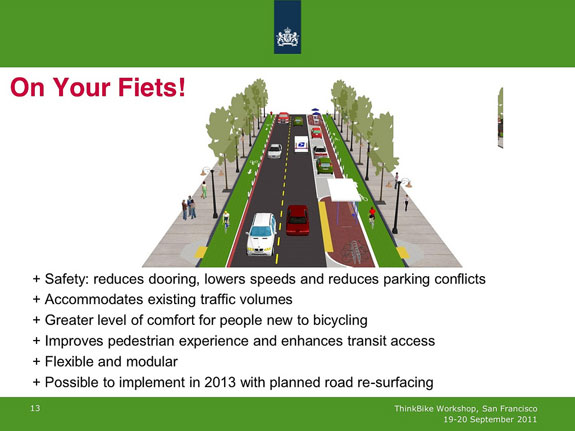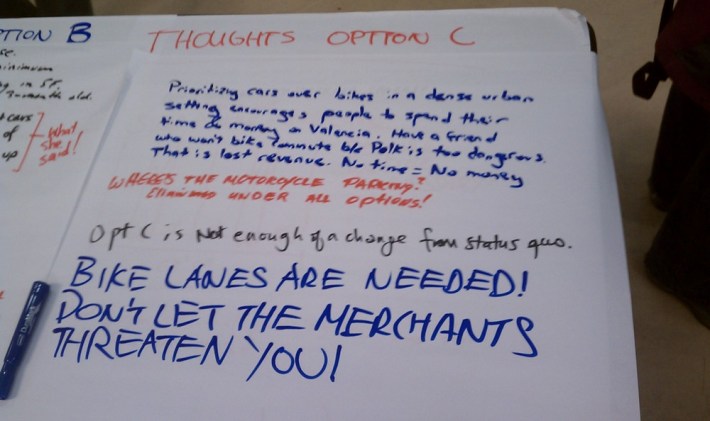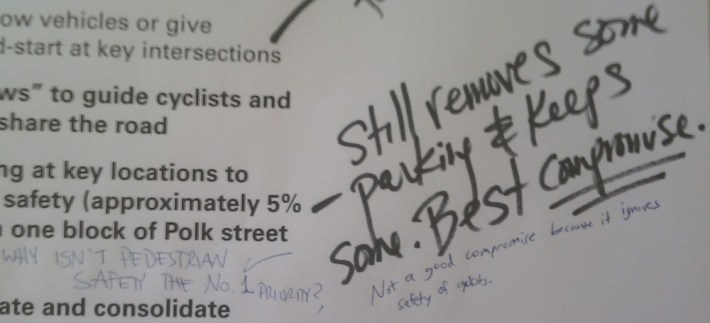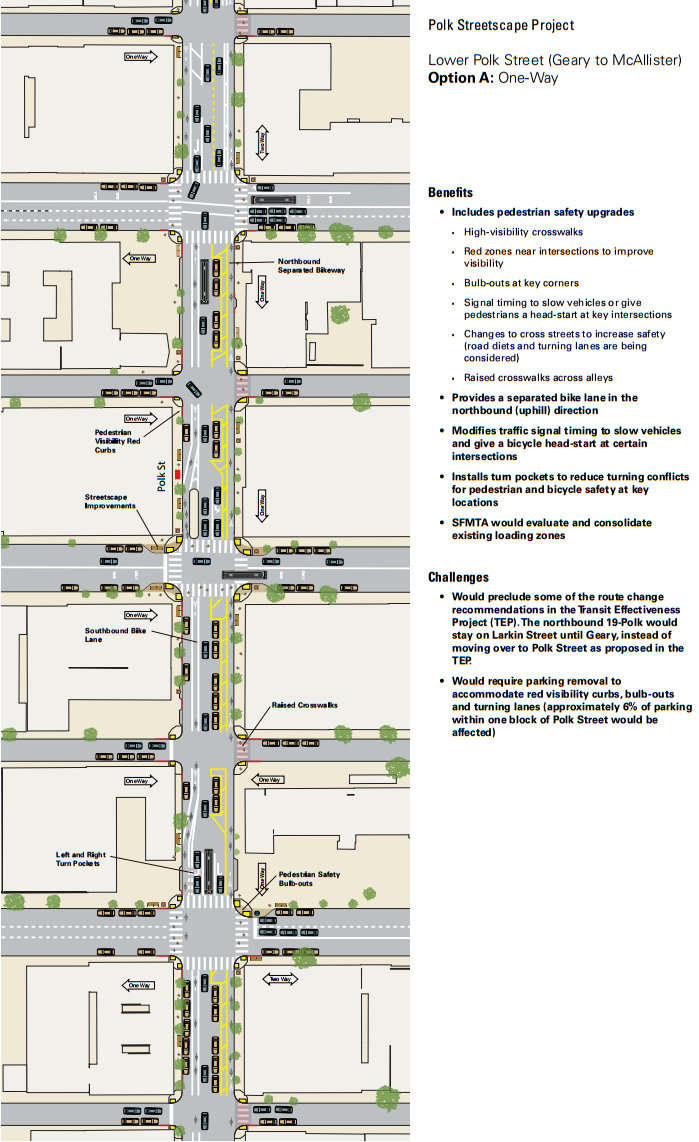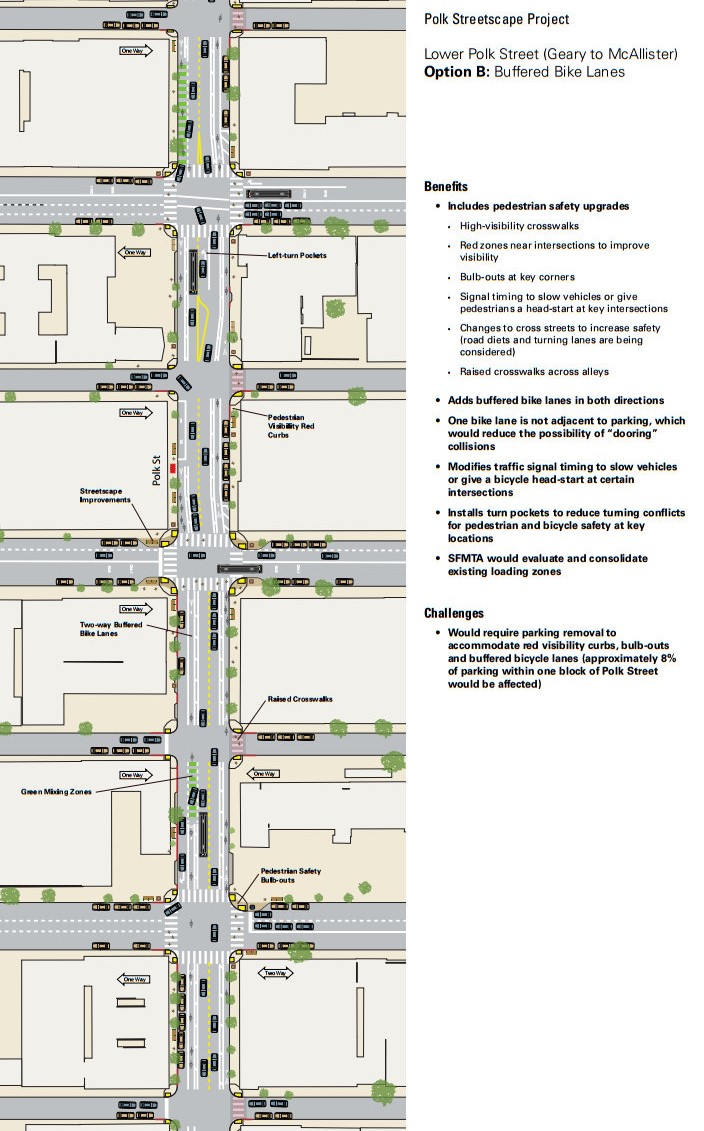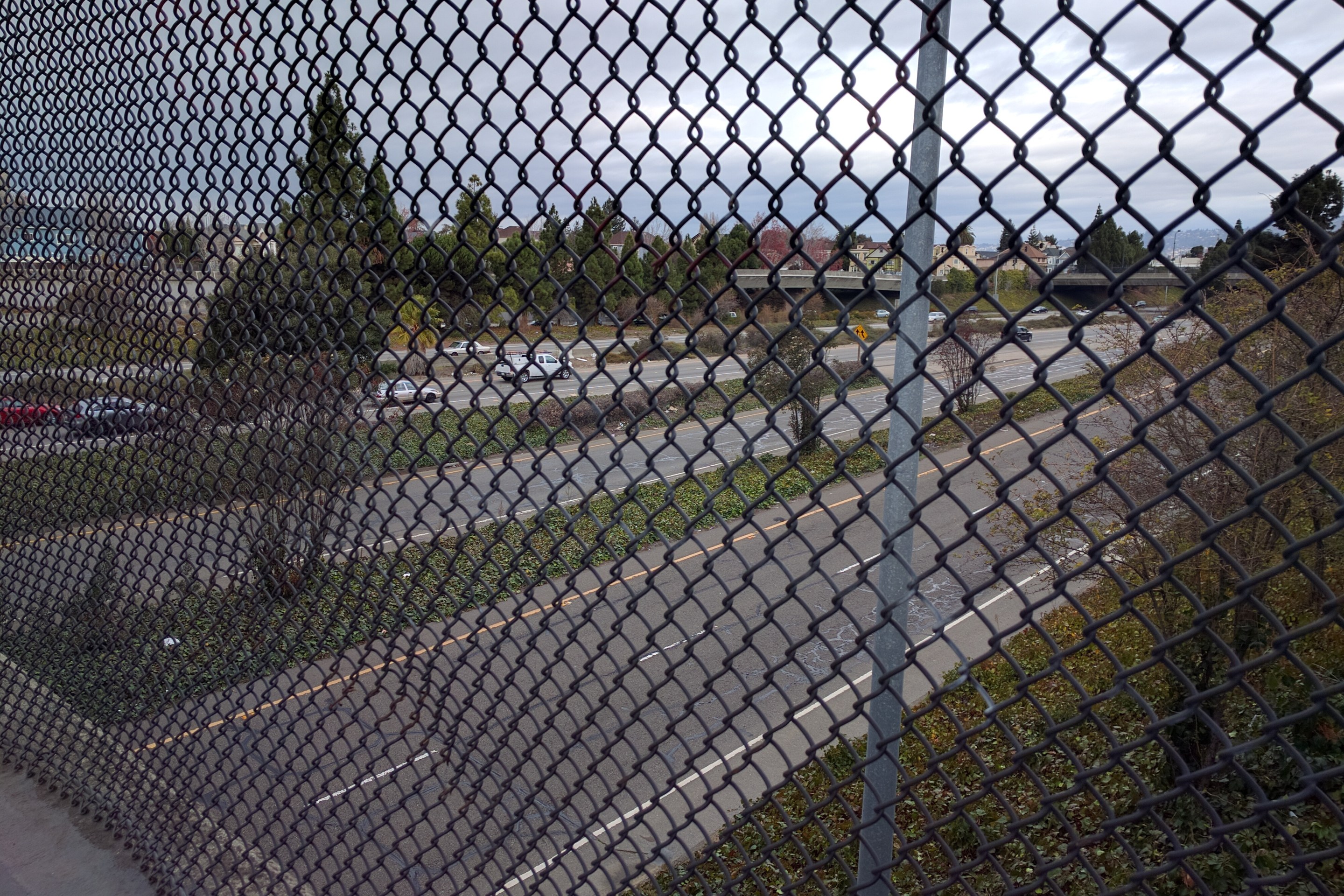The SF Municipal Transportation Agency has taken protected bike lanes off the table for 14 of 20 blocks of Polk Street under its latest design options [PDF].

The agency, it seems, has backed down from making bicycling on Polk safe enough for a broader range of San Franciscans, in order to placate merchants who have vociferously opposed removing a small percentage of parking to make room for safety improvements that could actually boost business on a street where 85 percent of people arrive without a car.
Instead, the SFMTA's most ambitious proposal for Polk between Geary and Union Streets only includes bike lanes that, depending on the block, would run either curbside (without parking) or in the door zone -- the kinds of bike lanes that only make a relatively small percentage of people feel comfortable enough to ride.
No longer included are options [PDF] presented by the agency in December which would have provided bike lanes that run along the curb consistently, with some stretches protected from traffic by parking lanes.
"The city is setting its sights too low if they're not committing to a truly family-friendly bikeway that really does offer people of all ages and skill levels a safe place to ride," said Leah Shahum, executive director of the SF Bicycle Coalition. "We know Polk Street is already one of the more intimidating places for people walking and biking, and we also know there's a major problem with dooring."
In all, the SFMTA now provides three design options for the two sections of Polk -- north and south of Geary. For both sections, the SFMTA has included an option that would essentially maintain the status quo for bicycling conditions, making no changes to the bike lanes except for some new green paint.
In terms of the amount of parking that could be removed, SFMTA staff said the range for these options is between 4 to 14 percent of the 2,100 on-street spaces within a block of the corridor. (When off-street parking is taken into account, for a total supply of 5,100 spaces, our calculations put the range at 1.6 percent to 6 percent.)
On the six-block stretch of Polk south of Geary to McAllister, the SFMTA does provide an option for protected bike lanes that would eliminate northbound motor traffic (precluding a potential re-route of the 19-Polk onto the street) and preserve much of the parking. Another option for that stretch would create buffered bike lanes with mixed levels of protection, running curbside on some stretches, between parked cars and moving cars on others.
Regardless of the options chosen, SFMTA planners said they would add all of the proposed pedestrian safety upgrades, like corner bulb-outs, re-timing traffic signals for slower speeds, and daylighting to improve visibility at corners.
The SFMTA presented the designs to the public at an open house on Saturday, and will hold another one Tuesday evening. In the last hour of Saturday's meeting, the venue was packed with what appeared to be a crowd with fairly mixed opinions. Most of the comments written on the boards, seemed to stem from passionate beliefs that safety should come before car parking.
The final outcome of the Polk project will set an important precedent as the SFMTA looks to implement similar improvements on other streets where adding protected bike lanes may mean re-allocating space dedicated to car parking. The agency will have to stand behind its 40-year-old transit-first policy of prioritizing walking, biking, and transit ahead of private automobiles, as well as its goals of reaching a 20 percent bicycle mode share by 2020.
As SFMTA Director Ed Reiskin has put it, "We have a very clear policy mandate." But Reiskin has also acknowledged that preserving parking on Polk means "there may be some trade-offs in terms of some of the safety or other benefits." By backing away from the safest option in order to preserve more parking, the agency is showing the limits of its policy mandate under Mayor Ed Lee.
SFMTA planners said they're still fielding input on the proposals, and that the ultimate decision on the selection of design options will be up to the SFMTA Board of Directors.
"We're still asking people to take a bit of a leap of faith with us on removing something that they think is essential to their business," said Seleta Reynolds, section leader for the SFMTA Livable Streets subdivision. "Until we can really demonstrate repeatedly that those kinds of projects really can work in a city like San Francisco, I think it maybe is too much of an ask for some folks, and one that is not fair for us to push."
The SFMTA's second open house meeting on the Polk proposals will be held Tuesday at 5 p.m. at the First Congregational Church Fellowship Hall at 1300 Polk St (at Bush).
